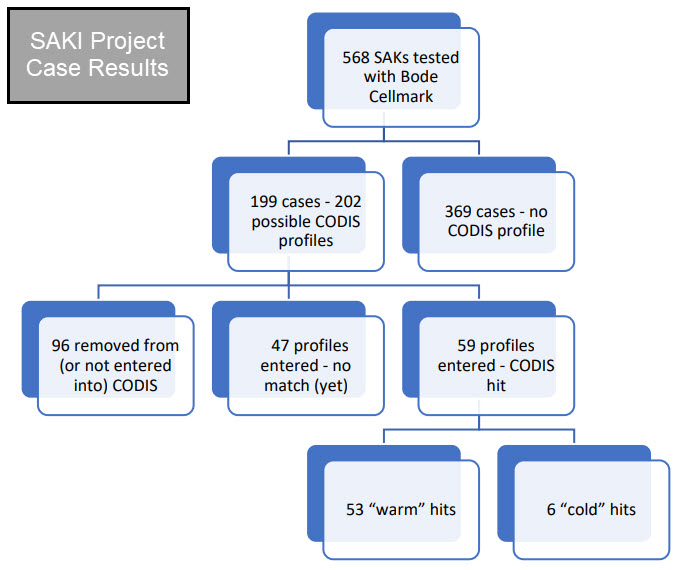Comm >
SAK >
Previously Unsubmitted Untested Kits
Previously Unsubmitted Untested Kits
In the first statewide kit inventory in 2017, over 3,000 previously unsubmitted, untested kits were identified across nearly 50 law enforcement agencies in Alaska. These kits spanned three decades, and there were many reasons kits were not submitted for testing over the years. In some instances, the kit was not submitted for testing because it was not needed for the immediate case. Sometimes, law enforcement or prosecutors made the determination that a sexual assault investigation would not proceed any further in the criminal justice process and declined to submit the kit for analysis. All of these decisions were made based on individual cases, and not necessarily with the potential impact on other cases in mind. In recent years, research on best practices has led to policy and procedure changes. Over the course of two projects, the SAKI Project and the Capital Project, the Department of Public Safety addressed the kits that were previously unsubmitted, as well as updating methods for submitting and testing sexual assault kits (SAKs) going forward. These projects have been completed.
SAKI Project: Between 2016 and 2017, the Department of Public Safety (DPS) was awarded a total of $1.5 million in Sexual Assault Kit Initiative (SAKI) funds from Bureau of Justice Assistance. This funding supported the testing and investigation of SAKs collected by the Alaska State Troopers that had not previously been submitted to the Crime Lab for testing. Additionally, the SAKI project funded the evaluation of approaches to sexual assault cases to develop evidence-based best practices. The testing portion of this SAKI project is complete; case results are below. Click here to review reports on the activities and goals of the SAKI project.
Capital Project: In the spring of 2018, the Alaska State Legislature designated $2.75 million in capital funds for the Department of Public Safety (DPS) to address untested SAKs. While the SAKI grant focused on SAKs associated with Alaska State Troopers' cases, the capital funds were used to test the remaining previously unsubmitted untested SAKs across the state associated with the other 47 police departments. The appropriation can be viewed here. This project is complete; executive summary report is below.

Why were these SAKs tested as part of these projects?

What was gained from these projects
Closure for survivors
Prosecution/ Increased public safety
- Possible links or identification through CODIS
- Additional investigative leads
Policy evaluation
- Areas to improve
- Improvements previously made
- Recommendations going forward
- Legislative and policies within agencies
Training
- Law Enforcement Officers
- Prosecutors
- Multidisciplinary teams

Progress to Date
-
The Crime Lab moved towards providing centralized storage for all SAKs after collection. This ensures:
-
The Crime Lab received the previously unsubmitted untested SAKs from all 48 law enforcement agencies.
-
All of those SAKs were sent to Bode Cellmark Forensics Lab for Testing.
-
All eligible SAKI Project kits and Capital Project kits were tested.
-
To further prioritize sexual assault cases and increase output, the Crime Lab divided the Forensic Biology Unit into two teams: Sexual Assault Team and the Major/Property Crimes Team.
Click on each project below for project information.
Case Results
